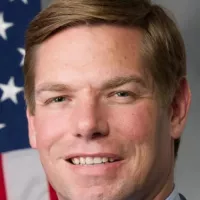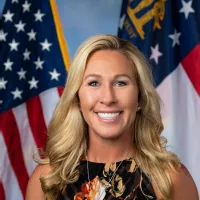Azusa Pacific University (APU) is a private evangelical research university located in Azusa, California, established in 1899. Rooted in a Wesleyan-Arminian theological perspective through its Graduate School of Theology, APU offers a wide array of academic programs. These include over 100 associate, bachelor's, master's, and doctoral degrees. Courses are available on its main campus, online, and at seven regional locations throughout Southern California, catering to a diverse student body.
March 3, 1900: First Classes Held
On March 3, 1900, Azusa Pacific University held its first classes in Whittier, California, marking the official commencement of its educational programs.
1933: Establishment of Campus Church
In 1933, a campus church was established as faculty members embraced Evangelicalism and rejected liberal trends. The new campus church planted eight "tabernacles" which collectively became known as the Evangel Church denomination.
1939: Degrees Offered
In 1939, Azusa Pacific University began offering degrees, marking a significant milestone in its academic development and recognition as an institution of higher education.
1939: Cornelius P. Haggard Became President
In 1939, Cornelius P. Haggard became the 13th president of the school. Facing low enrollment and funding shortages, Haggard initiated various fundraising efforts and served in his role for 36 years.
1939: Training School Becomes Pacific Bible College
In 1939, the Training School transitioned into Pacific Bible College, offering four-year degrees, signaling an expansion of its academic offerings.
1945: Establishment of SGA
Since 1945, the Student Government Association (SGA) has served APU by meeting with offices on campus and conducting surveys that analyze the needs of the APU student body. The SGA is composed of 28 students.
1946: Relocation to Azusa
In 1946, following mergers with three Southern California colleges, the university relocated to Azusa, California, where it remains today.
1956: Name Changed to Azusa College
In 1956, the institution's name was changed to Azusa College, marking an evolution in its identity.
1965: Name Changed to Azusa Pacific College
By 1965, Azusa College became Azusa-Pacific College (APC), reflecting a further development in its institutional branding.
1981: Achievement of University Status
In 1981, the college achieved university status and changed its name to Azusa Pacific University, signifying its growth and expanded academic scope.
1986: Membership in the Golden State Athletic Conference
From 1986 to 2012, The Cougars competed in the Golden State Athletic Conference (GSAC) of the National Association of Intercollegiate Athletics (NAIA).
1989: Paul E. Sago Becomes President
In 1989, Paul E. Sago succeeded Haggard as president, serving until 1989. Sago focused on developing off-site regional campuses and adding master's degree programs.
1990: Richard E. Felix Becomes President
In 1990, Richard E. Felix became president of Azusa Pacific University, initiating the university's first doctoral programs and introducing the "Four Cornerstones".
1997: Establishment of Ambassador Center
In 1997, following the closure of Ambassador College, the Worldwide Church of God and Azusa Pacific University jointly established the Ambassador Center at Azusa Pacific University to facilitate the continuation of classes for former Ambassador College students.
November 2000: Jon R. Wallace Becomes President
In November 2000, Jon R. Wallace became president of APU, having previously served as Executive Vice President.
2005: Directors' Cup Wins
From 2005, Azusa Pacific Athletics achieved eight consecutive wins of the Directors’ Cup.
2008: Bryan Clay Wins Olympic Gold
In 2008, Bryan Clay '03, an APU athlete, won the decathlon gold medal at the Olympics.
2009: Acquisition of Antiquities
In the fall of 2009, Azusa Pacific University acquired a collection of antiquities, including five fragments of the Dead Sea Scrolls and five first-edition prints of the King James Bible.
2010: Community Engagement Classification
In 2010, Azusa Pacific University was recognized for its commitment to community service and service-learning by the Carnegie Foundation's 2010 Community Engagement Classification.
2010: Treasures of the Bible Exhibit
In the summer of 2010, Azusa Pacific University displayed its newly acquired collection of antiquities, including five fragments of the Dead Sea Scrolls and five first-edition prints of the King James Bible, in an exhibit called "Treasures of the Bible: The Dead Sea Scrolls and Beyond".
July 11, 2011: Transition to NCAA Membership
On July 11, 2011, Azusa Pacific began the three-year transition process to becoming a member of the NCAA.
2012: End of Directors' Cup winning streak
In 2012, Azusa Pacific Athletics ended its streak of eight consecutive wins of the Directors’ Cup.
2012: Membership in the Pacific West Conference
In 2012, Azusa Pacific athletic teams became a member of the Division II level of the National Collegiate Athletic Association (NCAA), primarily competing in the Pacific West Conference (PacWest).
2013: Launch of Honors College
In 2013, APU's Honors College was launched, with David L. Weeks as dean. The Honors College is an Oxford-style, writing-intensive program.
2015: NCAA Division II Directors' Cup Standings
In 2015–16 APU finished 17th for the second consecutive year in the NCAA Division II Directors' Cup standings.
2016: Recognition for Degrees to Minority Students
In 2016, APU was recognized by Diverse Issues in Higher Education as one of the nation's top schools in awarding degrees to minority students. The university ranked among the top 100 in 11 baccalaureate categories.
2016: Diversity Initiatives
In 2016, the Center for Diversity, Equity, and Inclusive Excellence has diversity plan based on a UCLA Climate Study conducted by the Higher Education Research Institute assessing APU's social climate.
2017: Recognition as a Military-Friendly College
In 2017, APU was named as one of 130 "Best for Vets Colleges" in the 4-year schools category by Military Times.
2017: Economic Impact Study
In 2017, an independent economic study revealed that APU generates $1.25 billion in economic impact within California each year and contributes $37 million in state taxes, supporting 7,260 jobs statewide.
April 2018: Wallace Announces Retirement
In April 2018, Jon R. Wallace announced his plan to retire from his role as president and accepted the new role of president emeritus.
2018: Student Enrollment Statistics
Azusa Pacific University's 2018-19 enrollment consisted of 10,095 students, of whom 5,021 are at the undergraduate and 5,074 at the graduate and professional levels. As of 2018, 58 countries, 57 states (and US territories), and 56 Christian denominations are represented by the student population. Approximately 68% of students are female and 32% are male.
2018: Financial and Theological Concerns
In 2018, two university board members resigned from the university, citing concerns over financial mismanagement and "theological drift". As of 2018, Moody's had downgraded its credit rating of APU's bonds to BA1.
2018: Freshman Retention Rate
In the 2018–2019 academic year, the freshman retention rate at APU was 84%.
April 10, 2019: Paul W. Ferguson Named President
On April 10, 2019, APU announced Paul W. Ferguson as its 17th president.
June 3, 2019: Ferguson Begins Presidency
On June 3, 2019, Paul W. Ferguson began his role as the 17th president of APU.
2019: Freshman Retention Rate
In the 2018–2019 academic year, the freshman retention rate at APU was 84%.
December 2020: End of Football Program
In December 2020, Azusa Pacific University decided to end its football program due to financial restructuring.
2022: University Policy on Sexuality
As of 2022, University policy states that "God-given sexuality" is to take place in the context of a marriage covenant between a man and a woman.
Mentioned in this timeline
California is a U S state on the Pacific Coast...

Football encompasses a variety of team sports centered on kicking...

Oxford is a city in Oxfordshire England It serves as...

A community is a social unit defined by shared characteristics...
Trending
53 minutes ago Akaash Singh and Myron Gaines in Feud Over Jasleen Singh's Podcast

54 minutes ago Dennis Rodman: From Southeastern Oklahoma State to NBA Champion with Bulls and Pistons
54 minutes ago Tanzania rocked by deadly protests and police shootings, raising concerns about election unrest.

23 hours ago Flash Flood Warning in Phoenix Area: Hail, Lightning, and Dramatic Rescues

Eric Swalwell is an American lawyer and Democratic politician currently serving as the U S Representative for California's th congressional...

6 months ago Charissa Thompson Gets Taylor Swift's Pop-Tarts, Approved by Travis Kelce; Dinner Speculation Arises.
Popular

XXXTentacion born Jahseh Dwayne Ricardo Onfroy was a controversial yet...

William Franklin Graham III commonly known as Franklin Graham is...

Cristiano Ronaldo often nicknamed CR is a Portuguese professional footballer...

Candace Owens is an American conservative political commentator and author...

Michelle Obama is an American attorney author and former First...

Marjorie Taylor Greene known as MTG is a far-right American...